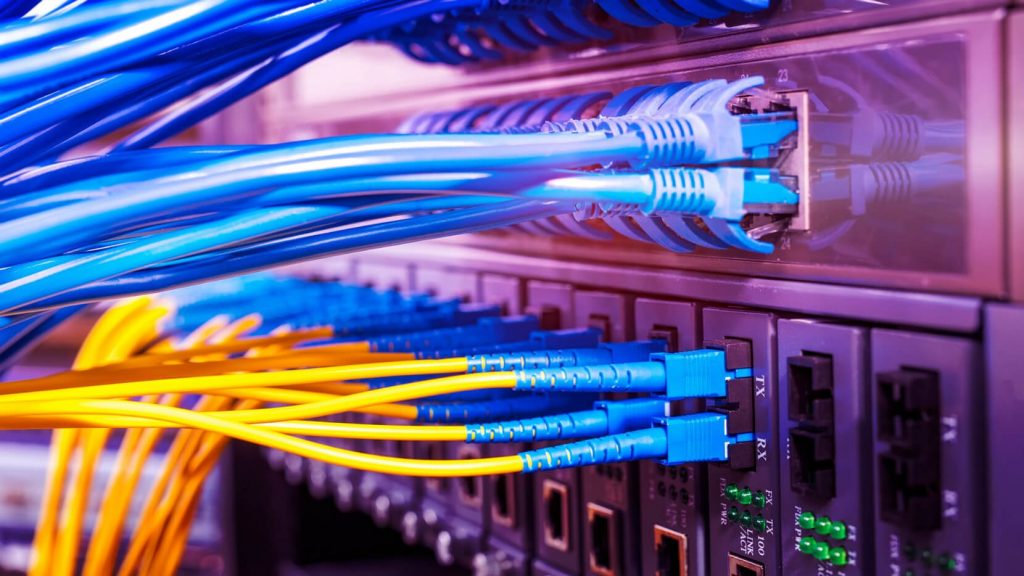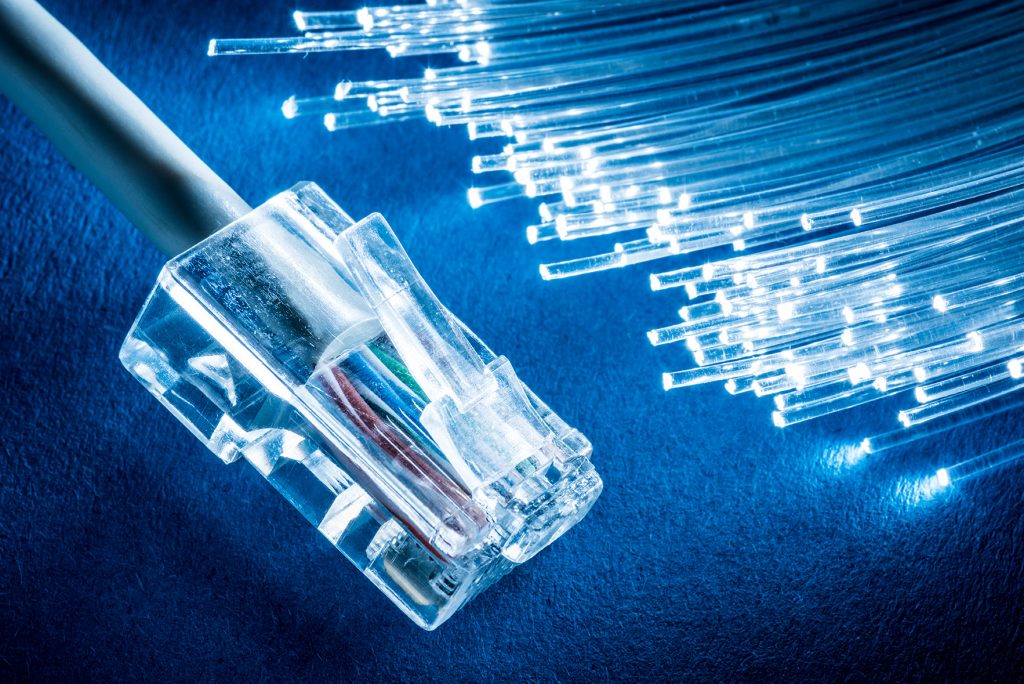With all the new different technologies, terms, connections, and development, it can be challenging to understand how the digital world works. Of course, we don’t have to know it all.
But, to go online and surf, we need internet access. That’s why understanding how internet connection types work is important for getting a good internet plan from your provider.
The fiber-optic broadband connection is considered to be the best type because it’s very reliable and fast. But how does fiber-optic internet work?
Let’s find out!

How Does Fiber-Optic Internet Work
Fiber-optic internet works through fiber cables, which are bundles of glass strands, each strand as thin as human hair. The optical fibers transmit data as pulses of light in binary form from the transmitting source to the receiving end, where a specific piece of equipment, OPT, converts them into electrical output understandable by our devices.
Thanks to the fibers’ ability to support fast data transfer, the fiber-optic connection type can deliver a download speed of up to 2,000 megabits per second. Of course, that’s not the speed the receiving end will receive. Still, the speed of the fiber-optic internet is incomparable to the other types, such as the cable and DSL connection.
For instance, with a fiber-optic connection, a 4 MB song requires around 0.03 seconds to download, while you’ll need around 1 second to download the same song. For a 2-hour HD movie of 4.5 GB, the fiber-optic connection needs 38 seconds, while the cable and DSL connection need 6 minutes, 26 seconds, and 25 minutes and 46 seconds, respectively.
From light to data
To answer how fiber-optic internet works better, we must go further into the topic and explain every detail. We’ll start with the optic fibers, which are the reason we can use this type of connection in the first place.
As we said, optical fibers are extremely thin spreads of glass. To be more specific, they are almost as thick as human hair. Each fiber has two parts called the core and the cladding.
The core, logically, is the innermost part of the fiber where the light passes. The core is usually made of glass. The cladding is the outer layer of the fiber, wrapping the core. It’s usually made of a thicker layer of glass or plastic.
Both parts of the optic fiber are crucial for data transfer because they work together and create a process called “Total Internal Reflection”, which is how light is able to move through the fibers without escaping.
Read more: What Equipment Is Needed for Fiber Optic Internet?

Data in codes
So, the Total Internal Reflection we mentioned above is a process that includes the entire path of the light through the fibers. The light goes through the core, and the cladding keeps it inside, thanks to its lower refractive index. But why is this important?
Well, the light that passes through the optical fibers actually represents LED or Laser pulses that carry binary data. Everything you see or do online is made of codes and coding systems, including the text you’re reading at this moment.
You probably already know that binary code is made of bits 1 and 0. These bits are organized into eight-part patterns known as bytes in order to send messages. How is this related to the light transferred through the optical fibers?
Since there are only two bits in the binary code, they’re very easy to translate into light pulses. One light pulse is 1. No light pulse is 0.
The Last Mile
The Last Mile is a term that you’ll most likely run into in all articles on how does fiber-optic internet work. The term refers to the last stretch of fiber between the consumer and the backbone of the internet.
In the previous subsections, we talked about optical fibers and the process of binary code transfer through LED or laser light pulses. However, once the light pulses reach the receiving end, they have to convert into data that our devices can understand.
It’s very important to note that light pulses travel extremely fast, which is why fiber-optic internet is the fastest compared to other internet connections.
So, once light pulses reach the end destination, they go through a specific piece of equipment called an Optical Network Terminal (ONT). The Optical Network Terminal converts the pulses into electrical Ethernet. The conversion happens at the end, in the last stretch of optical fiber.
There are multiple types of list mile connections, and they differ in the purity of the optic internet they can deliver. Each of those types is referred to as Fiber to the X (FTTX):
- FTTP; FTTH; FTTB; FTTD – fiber to the premise; home; business; desktop
- FTTB – fiber to the building
- FTTC; FTTN; FTTS – fiber to the cabinet; neighborhood; street
Pros and cons of fiber-optic internet
There’s no philosophy here – speed is the biggest advantage of fiber-optic internet. Other significant advantages are the stability, security, and reliability of the connection.
Another major benefit is low attenuation. Other internet connections provide a weaker signal with distance. For instance, after 320 feet of cable, a DSL or cable connection will lose around 94% of its signal, while a fiber-optic cable will lose around 3%.
Additionally, fiber-optic internet offers symmetrical speeds for download and upload, which is crucial for businesses and organizations that need to upload data daily.
On the other hand, fiber-optic internet isn’t accessible in many areas, especially rural places. Moreover, it requires major upfront costs for cabling, infrastructure, installation, and activation.
Also read: How to Connect Ethernet Cable to a Wireless Router
Conclusion
How does fiber-optic internet work? We hope our article successfully explained the complicated fiber-optic technology that stands behind the fastest internet connection so far. We talked about optical fibers, their function, and the data-transfer process that results in a highly-reliable and stable connection.
In the end, it’s important to note that even though this connection type comes with high upfront costs, it can be arranged up to 10 or 20 years in advance. Therefore, it’s more cost-effective than copper cables if we consider the long-term effectiveness.